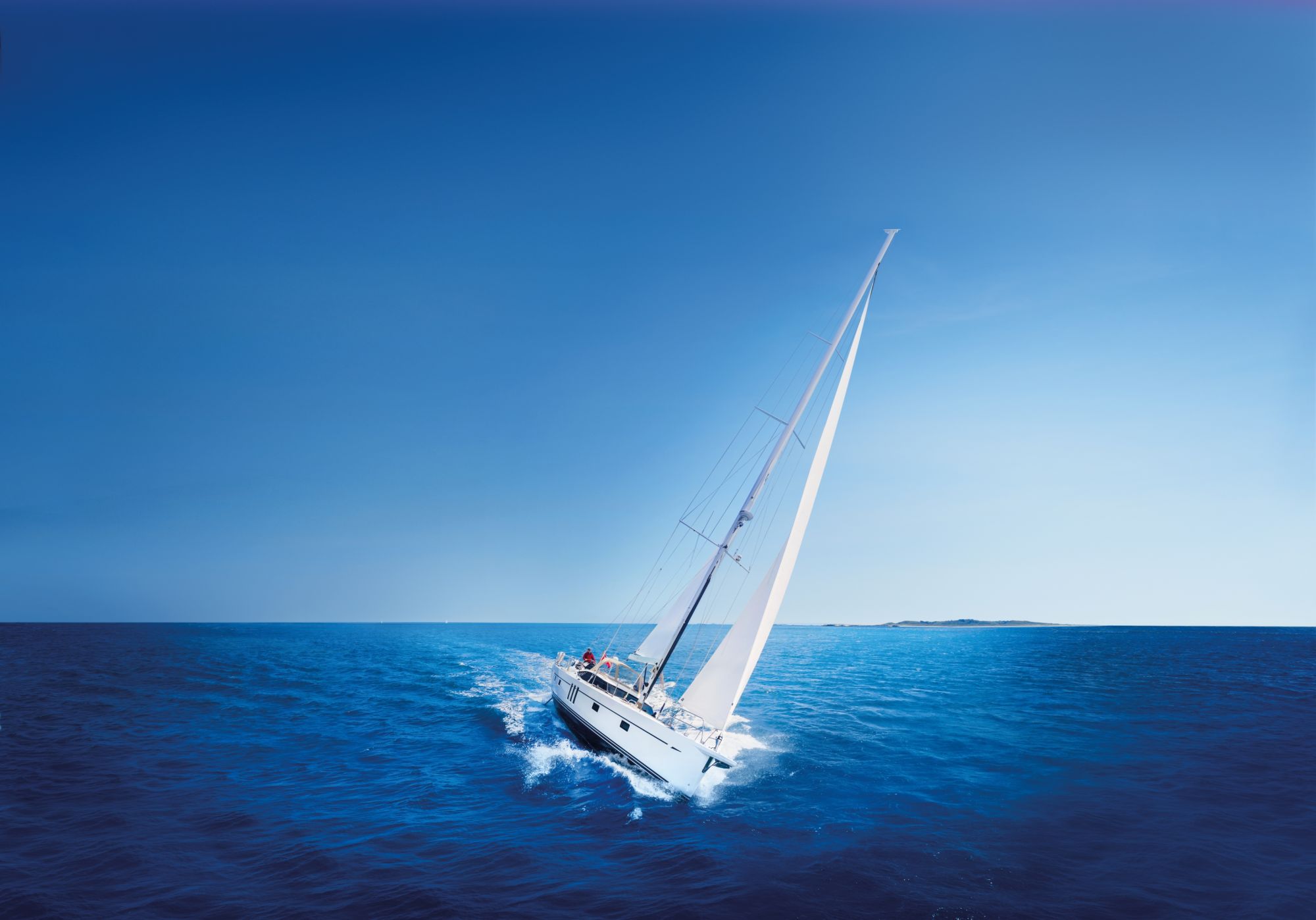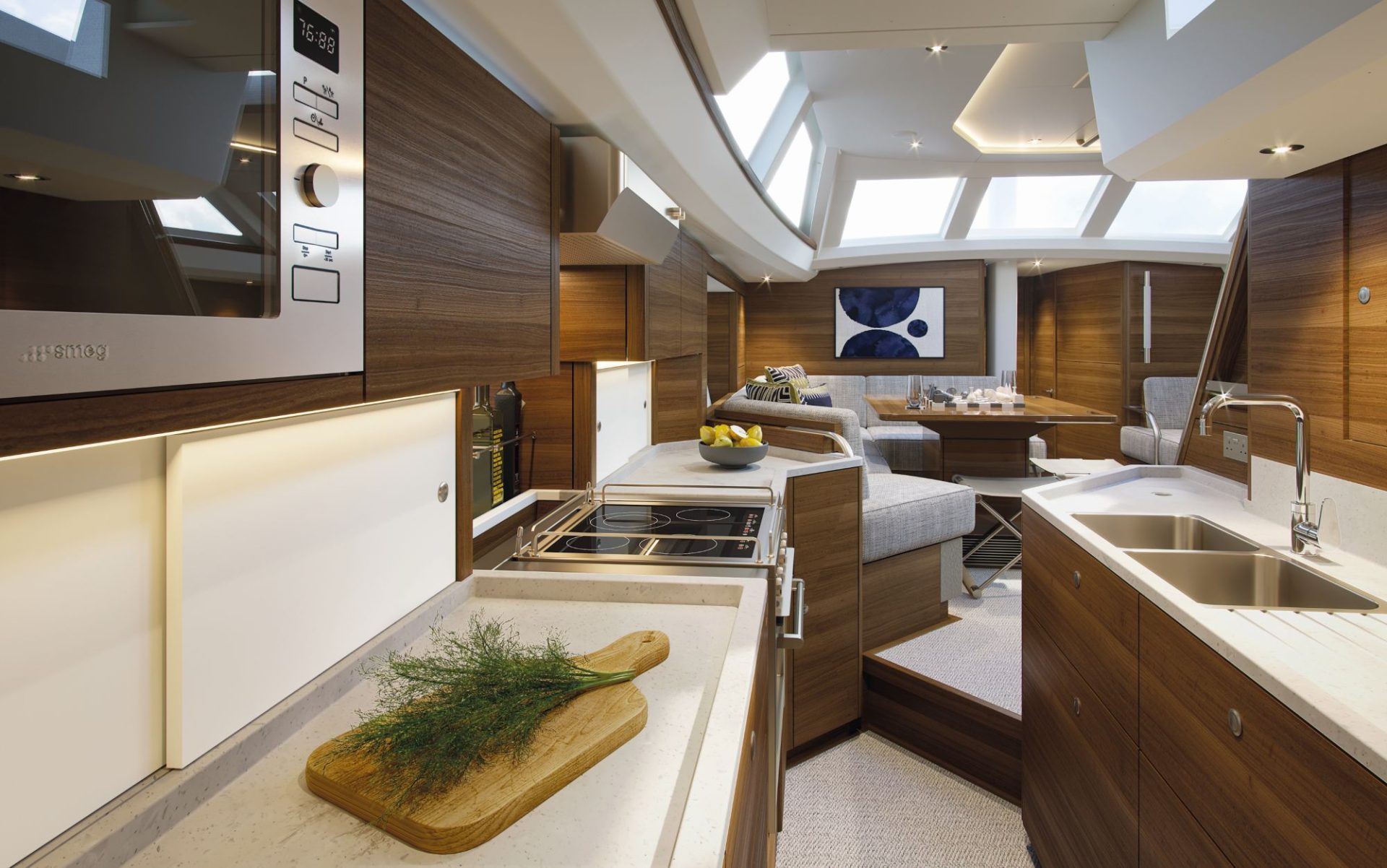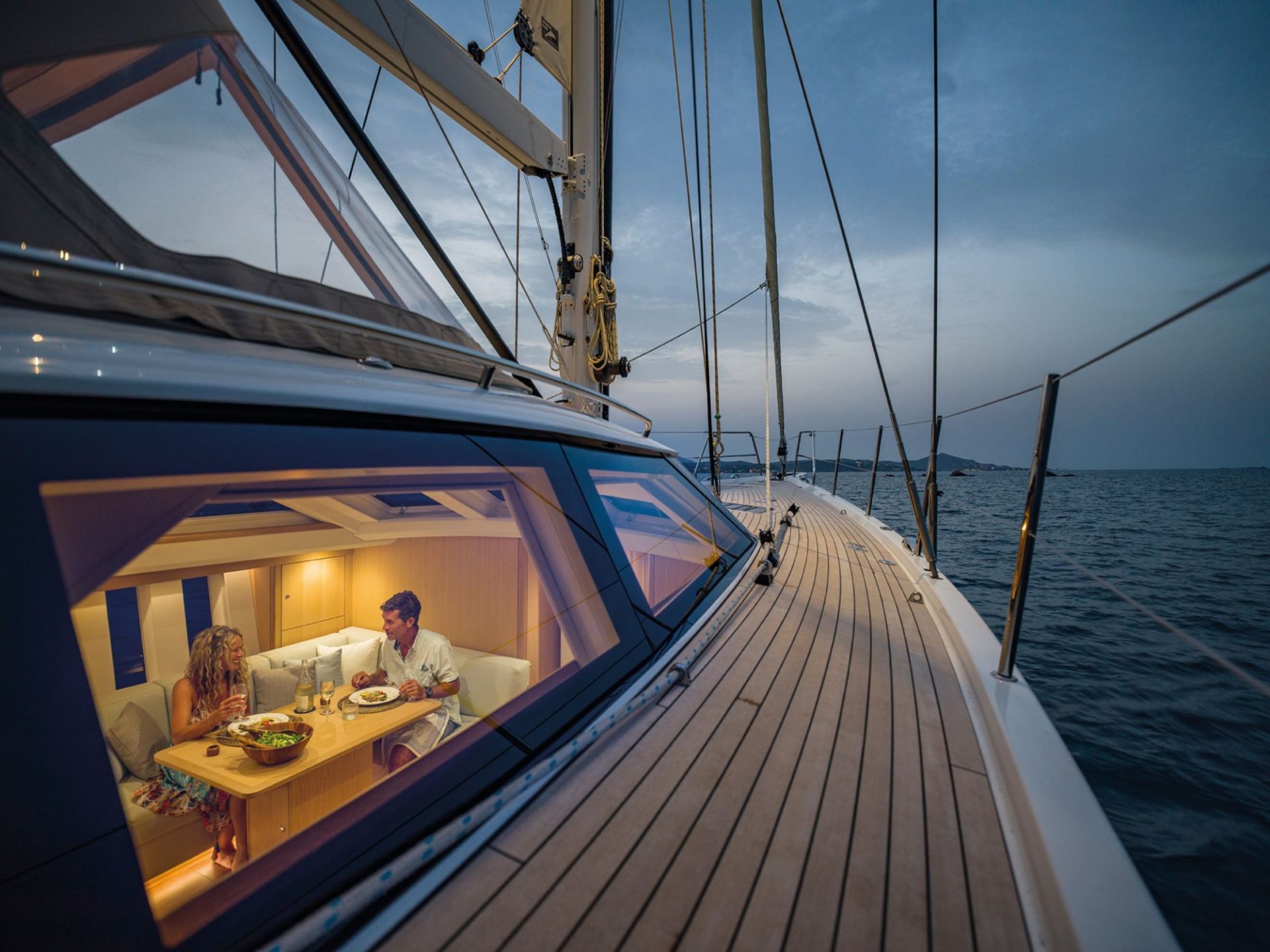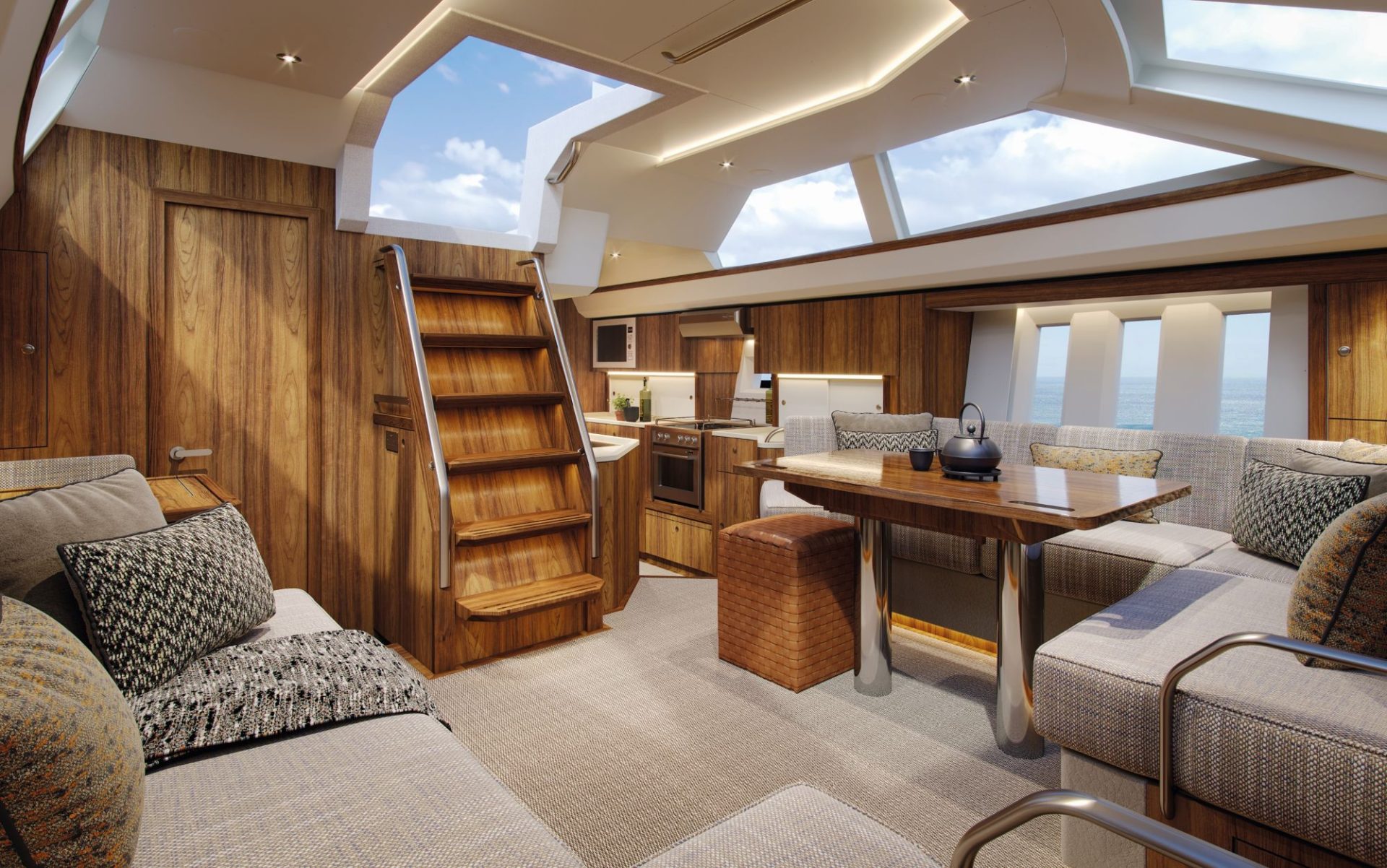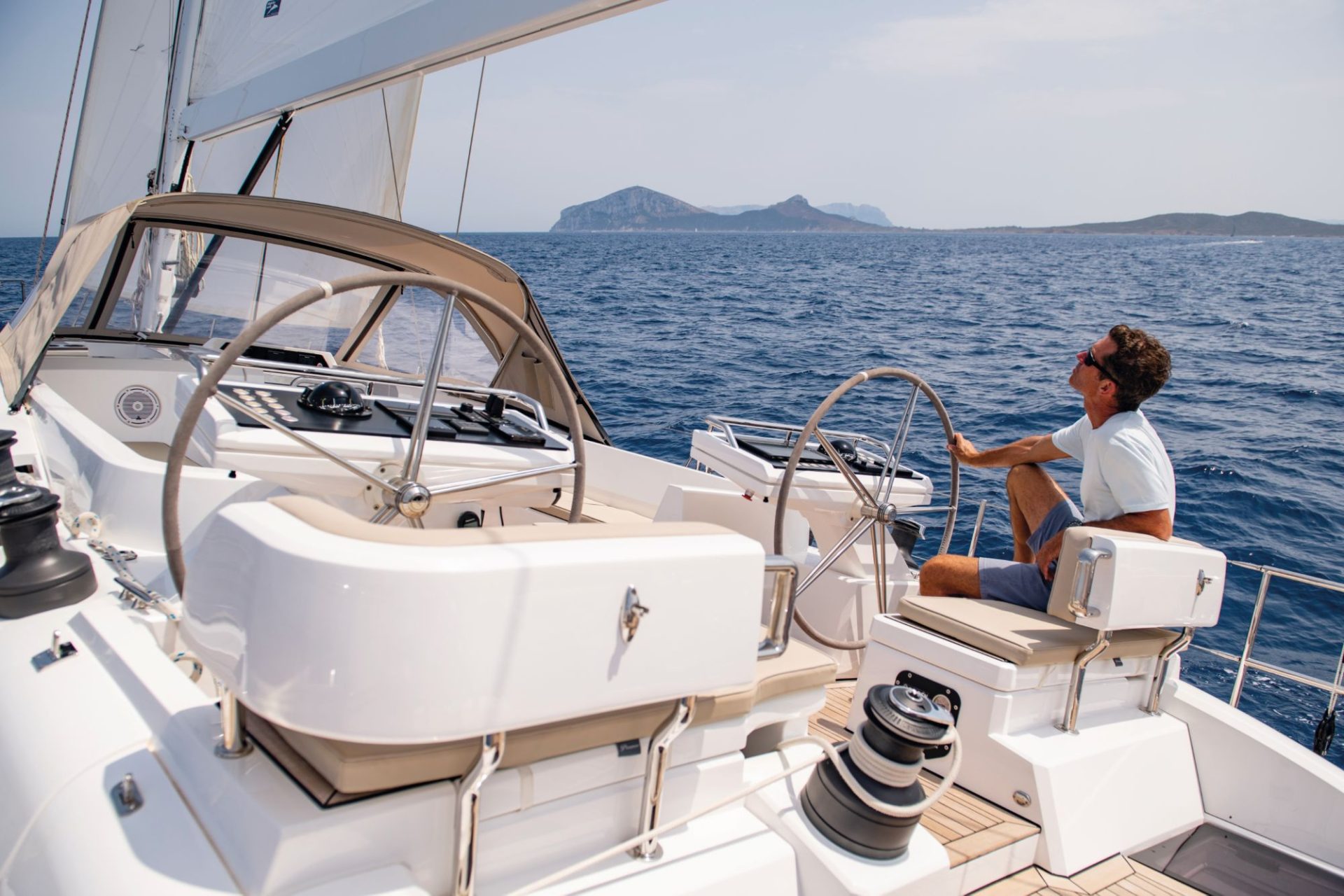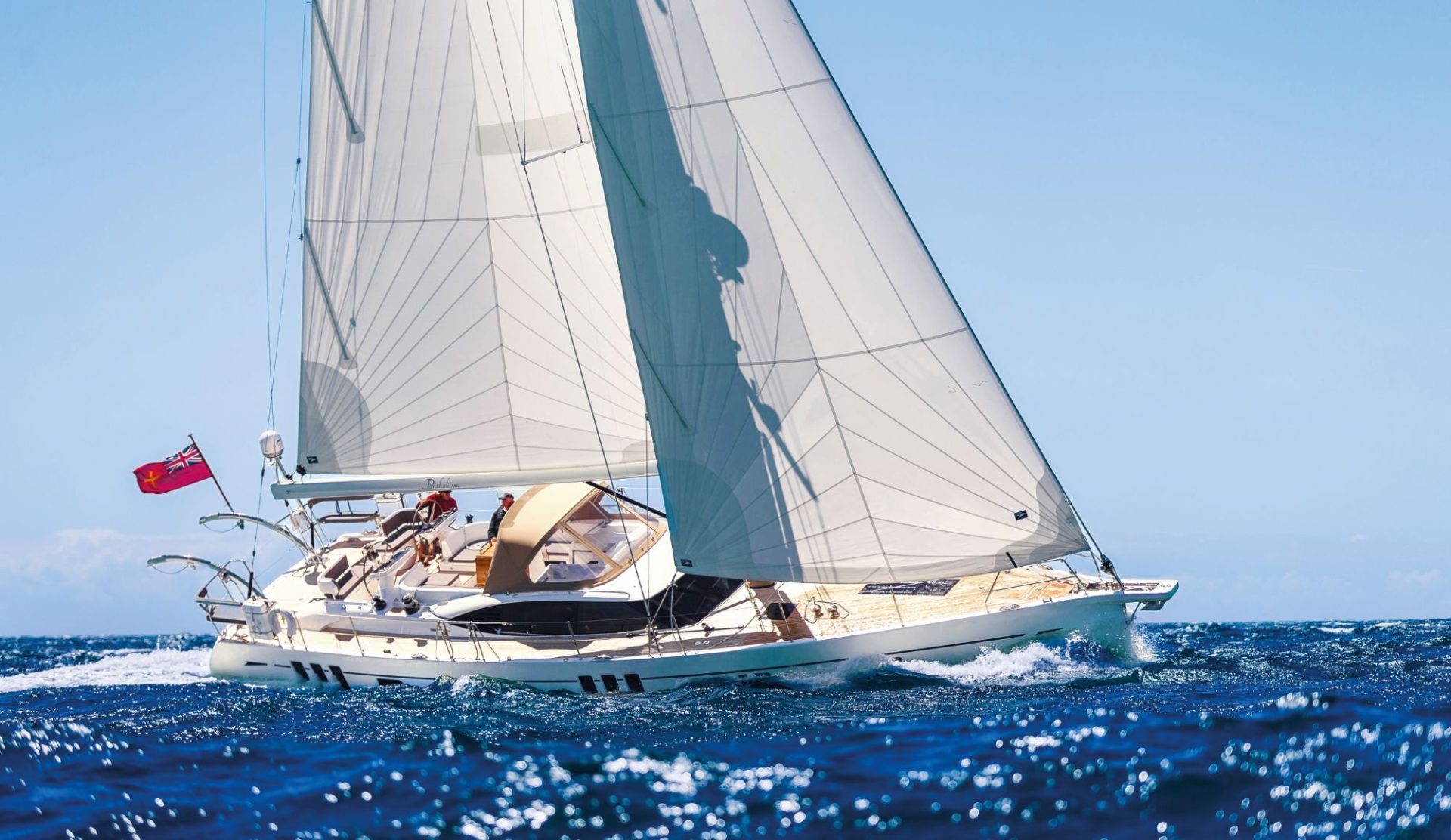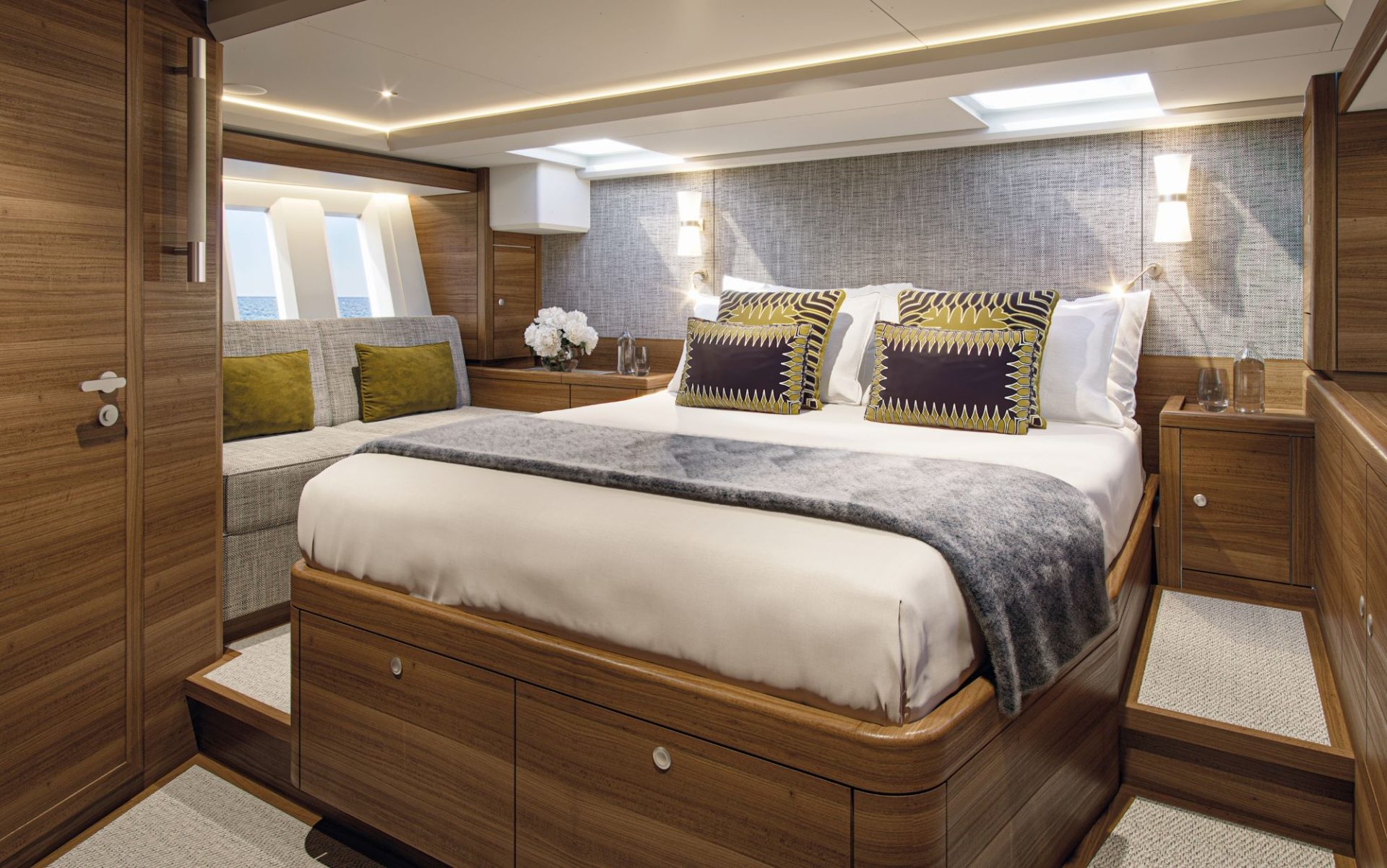Future perfect
The 565 was designed as a marker of intent at the start of a new era for Oyster. It has not only spawned a new generation of bluewater classics, but as we discover on a sail trial in Barcelona, it’s one of the best cruisers you can buy.
Written by Toby Hodges
21 December 2023
When British builder Oyster Yachts announced its new Oyster 565 five years ago, the stakes were high. The company’s previous backers – Dutch firm HTP Investments – had recently ceased to provide financial support and the company had gone into administration as a result. Then, when gaming software entrepreneur Richard Hadida bought Oyster six weeks later in March 2018, many wondered how he could possibly rebuild the brand’s credibility and turn the business around.
So, all eyes were on the 565 when it launched in 2019. This was the first completely new model under Hadida’s careful watch and it sat at the core of the British firm’s market. This is the yard’s most popular size, and the 565 replaced the 56 (75 sold) and 575 (45 sold).
Hadida introduced some key developments to help it succeed. Oyster began moulding its hulls in-house rather than subcontracting this work, and he wanted third-party oversight, so the move was made to bring in a Lloyd’s Register surveyor to inspect each and every yacht in build once a week to approve the design, materials and build quality of the hulls and decks.
The aim was to bring a level of assurance to new owners and to restore faith in the build quality – it’s a facet of the Oyster build process that remains central to this day.
Hadida also introduced a diverse group of board members, including designer Rob Humphreys and sailor and former Formula 1 team boss Eddie Jordan, as well as other business authorities. He put the Oyster Rendezvous regattas and successful Oyster World Rally back on track – but the groundwork would have counted for nothing if the 565 flopped.
I travelled to Barcelona to spend two days testing Panthalassa, the first 565 to launch. Knowing there was a huge amount riding on this model, I wondered if it would deliver. The answer was – and still is – a resounding yes. The 565 is one of the finest production yachts that I have ever sailed.
The design is contemporary and sympathetic to Oyster’s existing line-up but with more volume, comfort, simplicity, speed and stowage space than its predecessors. The deck and interior layout is right up to date, the engineering behind the scenes is of high quality, and the finish is a step beyond what almost any other production yard can offer.
I found the 565 berthed alongside an Oyster 56 in Port Ginesta, which conveniently illustrated how hull shapes and deck layouts have changed in 20 years. The 565 has around 30 centimetres more freeboard, the beam is carried much further aft, and it has a broader transom. The cockpit in particular is much larger, easier and safer to get into, and there are no sheets for guests to trip over.
The design strikes a balance between respecting the legacy of the 56 and the 2011-launched 575, introducing modern features such as a flush foredeck, clean lines and a greater hull volume. Some traditional cruisers may mourn the loss of a skeg-hung rudder and cutter-rigged headsails, but the ease with which you can handle this 565 in most conditions should convince the majority that modern design wins here.
A robust bowsprit extends the yacht’s length to 59 feet. Although the hull length of the new 565 is shorter than the 575 it replaced, its waterline length is longer and it boasts 10 percent more volume. Its full bow sections also create space for a sail locker, a crucial asset for stowing the off-wind sail needed to supplement the blade jib.
The 565 is clearly the product of a yard used to building high-end large yachts, as opposed to one pushing up in size into a level of engineering and quality with which it is less familiar. This is perhaps why Oyster describes it as a pocket superyacht.
In this respect, the appointment of Paul Adamson as Oyster’s Chief Commercial Officer was shrewd. Adamson is a seasoned Oyster skipper who took Eddie Jordan’s Oyster 885 Lush around the world. (The yacht now belongs to Richard Hadida.) Adamson brings practical, hands-on expertise and big-boat knowledge to the yard.
The Oyster 565’s original £1.5 million price tag was steep admittedly, but comparable to similar-sized yachts from competitor brands and, unusually, the 565 comes with a very high standard spec. This includes hydraulic thrusters, furlers and windlass, tri-radial sails, powered winches, a generator and a full electronic navigation package. You’ll even find 100 metres of 12-millimetre chain in the anchor locker.
The 565 comes ready to go with all the equipment the company knows will make for comfortable ocean cruising, gleaned from decades of experience and owner feedback. And it’s immediately obvious as soon as you step on board that every detail has been thought through. The high guardrails have boarding gates built in. If berthed stern-to, a cassette-style passerelle (an extra option) extends at the push of a button, and its handrail rises automatically. Moving forward between the twin wheels, you enter a generous-sized, deep centre cockpit.
A bluewater boat needs to have a kindly motion at sea. It also needs to be easy to sail and remain comfortable when heeled. During our trials, the Oyster was to prove genteel, safe and enjoyable to sail.
The 565 is simplicity itself to get on and off a berth, and comes with retractable bow and stern thrusters as standard, allowing you to spin the boat around its keel.
The hydraulic thrusters are powerful enough to be able to park sideways against a crosswind and also easily correct any misalignment when approaching the dock.
The hydraulic furling makes it equally simple to deploy sails – even in a strong breeze or awkward seaway. I’m not usually a fan of in-mast furling mainsails, but here, the ability for one person to set and furl away the mainsail without leaving the helm undoubtedly outweighs any negatives.
Oyster has also ensured you can manually furl sails should the power or hydraulics fail. Both the mainsail and jib furlers have sockets that allow you to winch the sail by hand or, easier still, operate them with a cordless drill. (A fully charged 18-volt drill will reportedly manage 15 mainsail furls.)
The blade jib enables the 565 to point higher and tack or gybe faster and more easily than previous Oysters with cutter rigs, and without the risk of yankee or genoa sheets whipping around the cockpit. It also proved the ideal sail for our long beats upwind in 12- to 20-knot winds.
The 565 is a powerful design with a medium displacement that is able to maintain consistent speed with a soft motion through the waves, which makes for both a quiet and a comfortable ship. The twin rudders provide the helmsperson with total control and forgiving handling.
When the apparent breeze reached the high 20s and the leeward gunwale was immersed, we were on the verge of needing a reef yet the helm remained light, with only a slight increase in weather helm. This means light work for an autopilot. You can really load the boat, so would need to keep an eye on true wind speeds and when to reduce sail.
The test yacht’s bright red asymmetric spinnaker helped us get the most from the Oyster off-wind. Again, it was the consistent speeds that stood out – 9 to 9.5 knots in flat water with winds in the low teens, rising to double figures when going with the swell.
Once the breeze was up to a Force 5 on our second day, we were sailing consistently at 10 knots. I was hooked. This is an indulgent way to tick off mile after mile.
Most sail controls and sheets are within reach of the twin pedestals yet clear of the guest cockpit. When standing at the helm, it’s possible to straddle the coaming to release a sheet or reach the powered winch buttons during a tack.
For owners who want to sail shorthanded, it might be more practical to have the primaries closer to the helms, allowing them to hand-steer the boat through a tack rather than relying on an autopilot. Leading the jib sheet to the aft (spinnaker) winch might make more sense too, as it’s closer to the helm and easier to reach without leaving the cockpit.
The mainsheet winch is directly abaft and in reach of the helmsman. It feels awkward turning round to trim the main, but I guess it’s something you’d get used to, or would settle for engaging the autopilot before trimming the main. There’s currently no option for a traveller. Adamson believes that for most owners, clear access to the cockpit is paramount, and a powerful vang was chosen to control the main instead.
The distance between the two wheels is perfect. Footwells help ensure you feel in, rather than on top of, the boat while helming – that was not always the case on previous models. Wraparound backrests at the seats and handrails on the pedestals create a feeling of security around the helms. Moving forward along the wide side decks also feels safe thanks to high guardrails and handrails along the coachroof. Outboard shrouds and inboard jib tracks leave a comparatively clear side deck. The shrouds disappear neatly into composite chainplates below the toe rail.
Going below feels less secure when the boat is heeled, however. The flat companionway steps are steep, and curved sides would be more practical. The interior has plenty of handholds and solid fiddles, but I did notice there’s so much headroom in the saloon that I could only just reach the overhead handrail on the centreline. It’s easier to move forward along the starboard side of the saloon, though, and elsewhere the layout suits life at an angle.
It’s remarkably quiet below decks, a hush belied by the mesmerising sight of the sea foaming past the big leeward hull windows.
Oyster has stuck to a tried and tested interior layout for the 565 and has furnished and finished it impeccably. The standard of joiner work is as good as any you’ll find at production yacht level.
The galley and aft cabin would be hard to better, and the utility cabin amidships, a workroom-cum-laundry with an optional pilot berth and access to the walk-in engine room, further complements the proven layout.
Unusually at this size, Oyster offers the option of a master cabin forward with two double cabins aft. But unless you plan to spend long periods berthed stern-to, the standard owner suite aft with the magnificent views it provides will surely win every time.
Every part of the accommodation is used to its full potential, and stowage is maximised without any part feeling cramped. Practical touches include the cedar-lined, lit and ventilated wardrobes, clever use of indirect lighting, and deeply fiddled work surfaces that are shaped, moulded and laminated in-house.
However, it’s what lies behind the scenes that impressed me most. All services are easy to access for maintenance. The headlining is mounted on velcro, while the floorboards use the Fastmount panel system – Oyster really does need to find a way to stop these sole panels from creaking, however, as it spoils an otherwise quiet interior.
Look below the saloon sole and you’ll find a proper, deep bilge sump in the keel stub. Bilges throughout the boat drain here through limber holes, which ensures any water stays in the lowest part and doesn’t slosh around. This is the most logical place for bilge pumps and, by mounting them on removable plates, Oyster has ensured they can easily be lifted to clean the strainers.
Installed right beneath the companionway are two large bronze seawater inlets, one for the domestic side, such as fridge and air conditioning, and the other for the engine and generator. These systems are linked so that if one becomes blocked, you can shut it down and use the other. It’s also comforting to see the surrounding pipes all clearly labelled Lloyds-approved.
The companionway steps lift for stowage and access to the top of the 11-kilowatt generator. Here, you notice the thickness of the sound insulation.
Adamson says Oyster has learned a lot about this through building its larger models.
The engine room, for example, is surrounded by plywood with a high-density core and insulated with a composite of foam and sound-absorbing materials. When the engine is on tick-over, it’s almost impossible to hear it in the cockpit.
Besides walk-in access to starboard, the panels below the galley sink can be removed for access to the port side of the engine room.
The engine block sits on flexible mountings, below which is a sump that prevents any oil from running into the main bilge area. There’s an electronic pump-out for an oil change, a powered fuel polisher and a water-in-fuel alarm – systems that are normally only found on larger yachts.
The longer you look, the more you appreciate the careful planning and intricate detail that has gone into this yacht. The 565 set out to revive the brand’s fortunes under new ownership, and there can be no doubt that it has nailed its brief – this is a seriously impressive yacht. It’s a modern design, through and through: good-looking and spacious. It’s certainly expensive but for good reason, as it includes an extremely high standard spec. And the engineering quality and level of finish really raise the bar.
No yacht is perfect, but in terms of design and execution, the Oyster 565 is as close as you’ll find on a series-built cruising yacht.
Sitting right at the core of Oyster’s most popular size bracket, and allowing for shorthanded cruising with global bluewater capabilities, it set the stage for Oyster’s step into the future. Now, joined by the equally impressive Oyster 595 – launched in 2021 (see Ocean‘s full onboard sailing review) – and the award-winning Oyster 495 (see Ocean’s extensive 1,750-mile sea-trial review), the 565 made that step, and then some.




